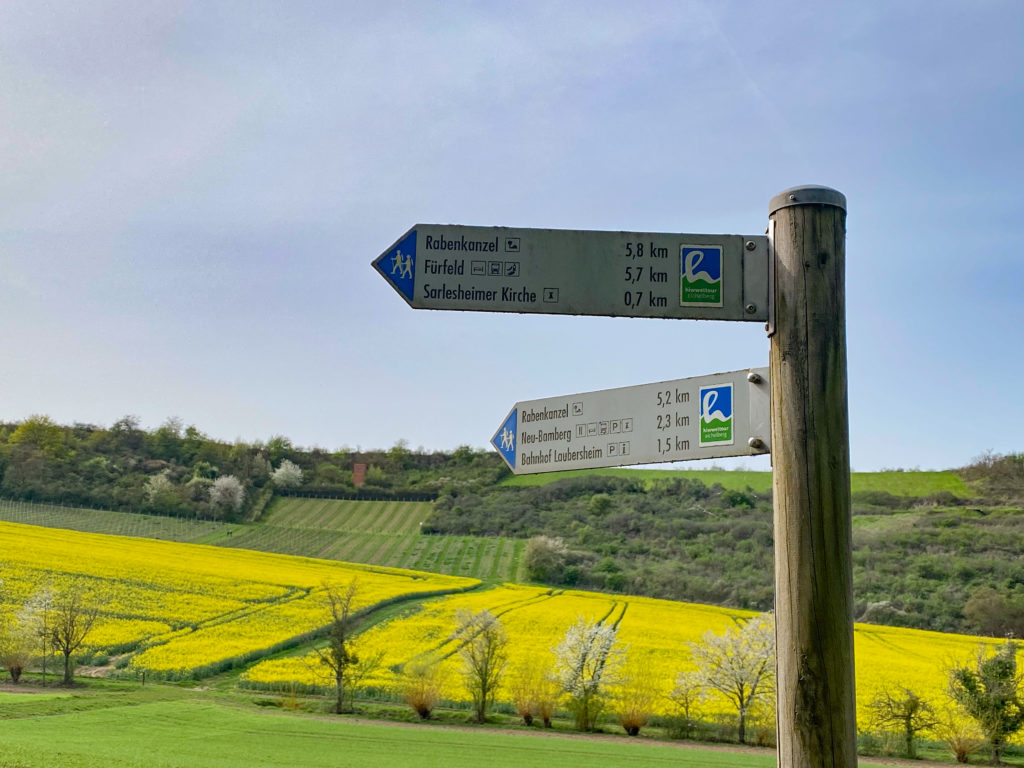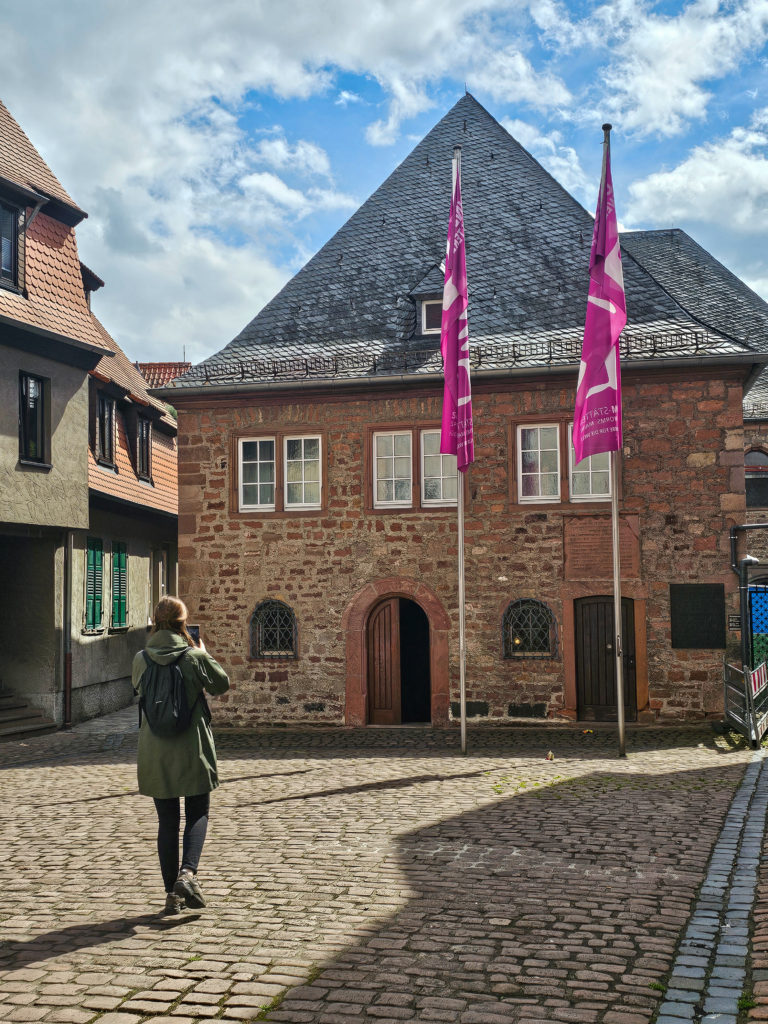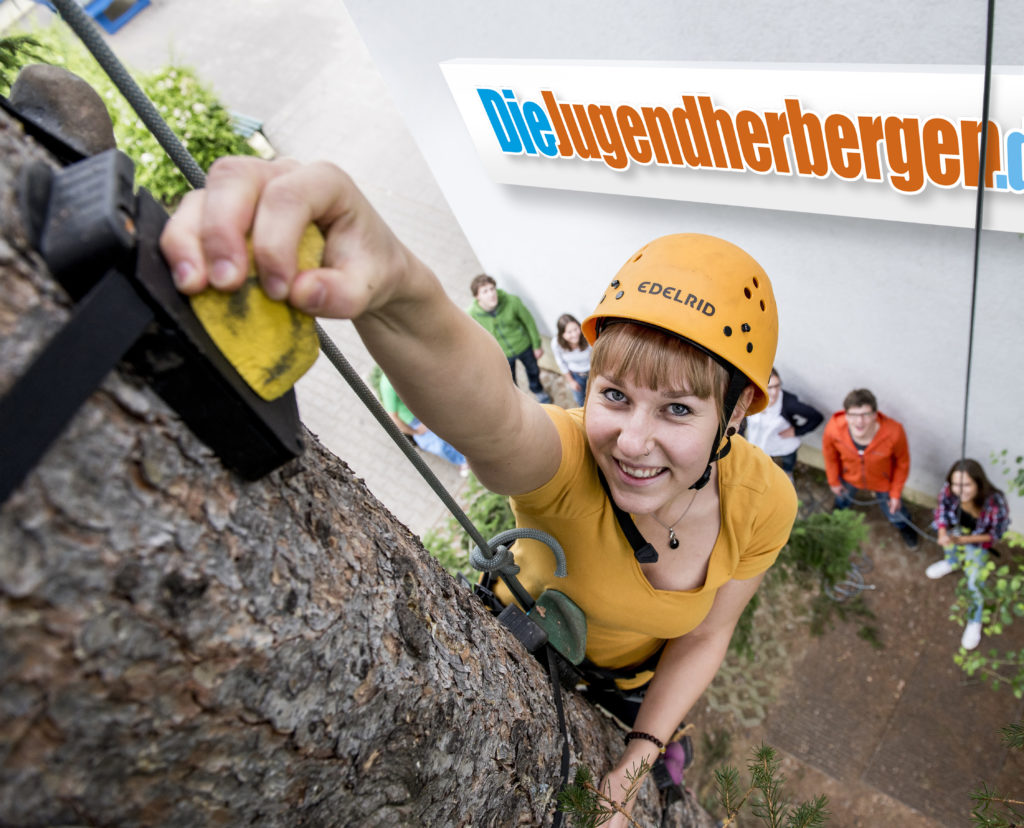News about the show quarry near the Naturfreundehaus and the newly designed Flonheim information center.
Die Hiwweltour Aulheimer Tal bei Flonheim gehört zu meinen Lieblingstouren in Rheinhessen. Schon immer bietet die Wandertour ein besonderes Flair durch die Flonheimer Steinbrüche und die Möglichkeit, sich nach der Wanderung das historische Flonheim anzusehen. Seit dem vergangenen Jahr warten gleich zwei Neuigkeiten rund um die Hiwweltour Aulheimer Tal darauf, entdeckt zu werden:
- The SCHAUsteinbruch Schneider was opened last year. Here you can experience the rich past of the Flonheim quarries.
- The Flonheim information center was redesigned and converted into a barrier-free information center where visitors can experience the sea, stone and wine as well as Flonheim's cultural past.
On site, I meet with experts on two occasions and find out more about the "new" quarry and the redesigned Flonheim information center.
SCHAUsteinbruch Schneider
My first choice for finding out more about the quarry is my colleague Jürgen Diehl, who, like me, is not only a cultural and wine ambassador for Rheinhessen, but also the chairman of the association "Association of Friends of Nature Flonheim and Surroundings e.V." I have known from him for some time that the association acquired a quarry near the Naturfreundehaus in 2016. The former Schneider sandstone quarry has since been developed into the SCHAUsteinbruch Flonheim quarry as a project of Natur(schutz)freunde Flonheim.
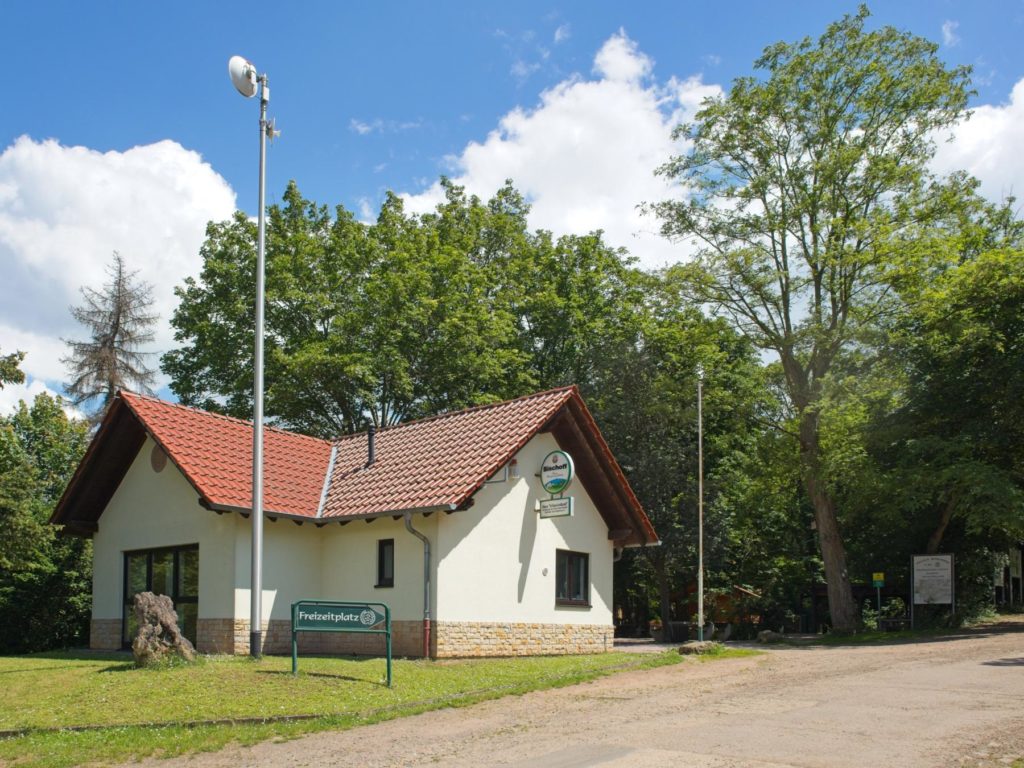
I meet up with Jürgen at the Naturfreundehaus, which is located near the former Wiesbachtal railroad line and at the end of Flonheim's Bahnhofstraße. The Hiwweltour leads right past the Naturfreundehaus, so we follow it for just 100 meters before turning off onto the access path to the quarry for another 200 meters. As we approach the quarry, Jürgen tells me that even this access route was a bit of an adventure. Much of it was overgrown, so the path had to be cleared and filled in to straighten it out. Old wooden posts at the edge of the path bear witness to the land markings.
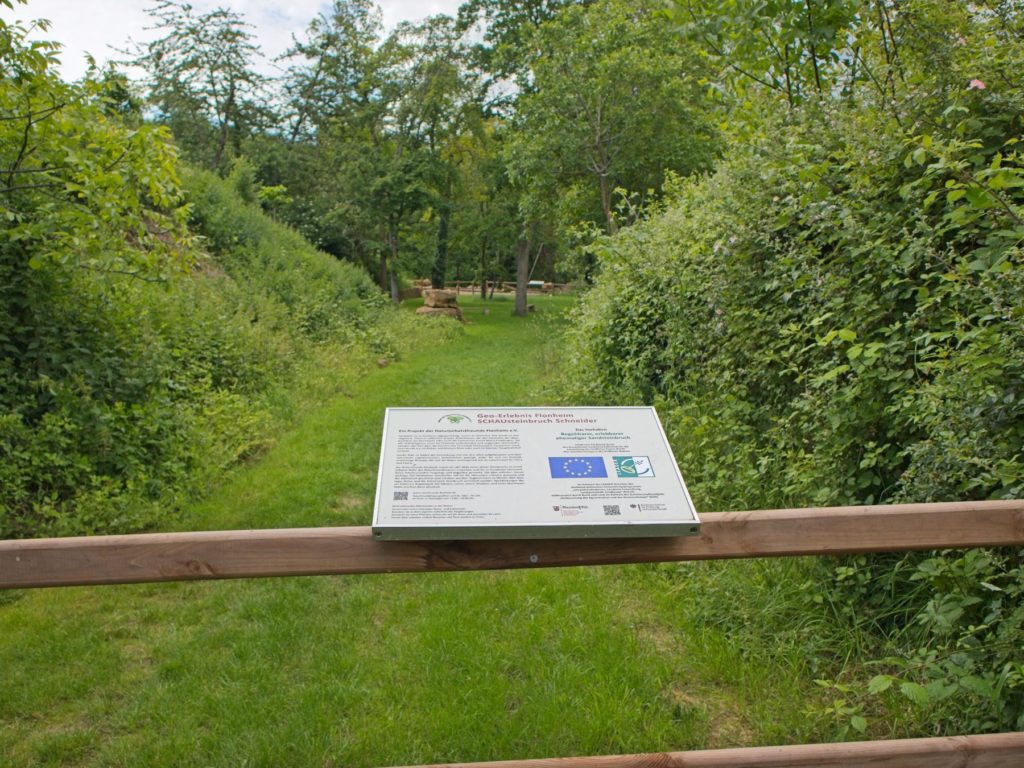
During the work, Naturfreunde Flonheim discovered old dry stone walls, which they uncovered and extended to form the square on one side. Then we are already in front of the quarry. Actually, I think, the wooden fence is blocking access. But Jürgen tells me that it serves as protection for visitors. Later, he shows me a place where a piece of stone has fallen down.
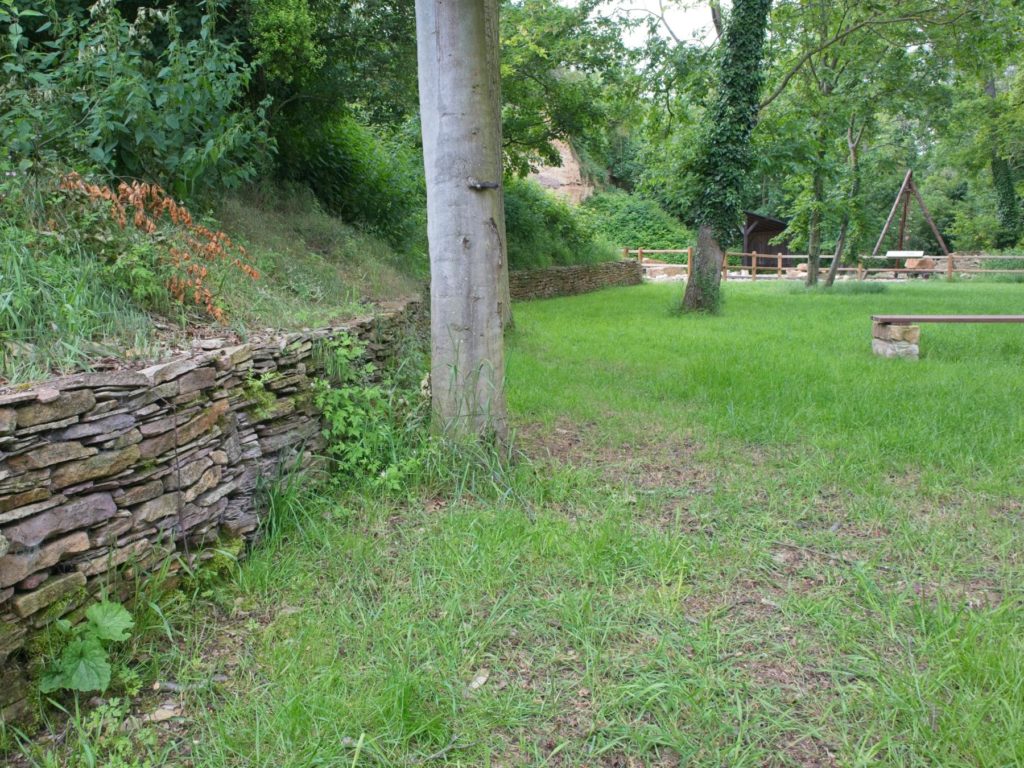
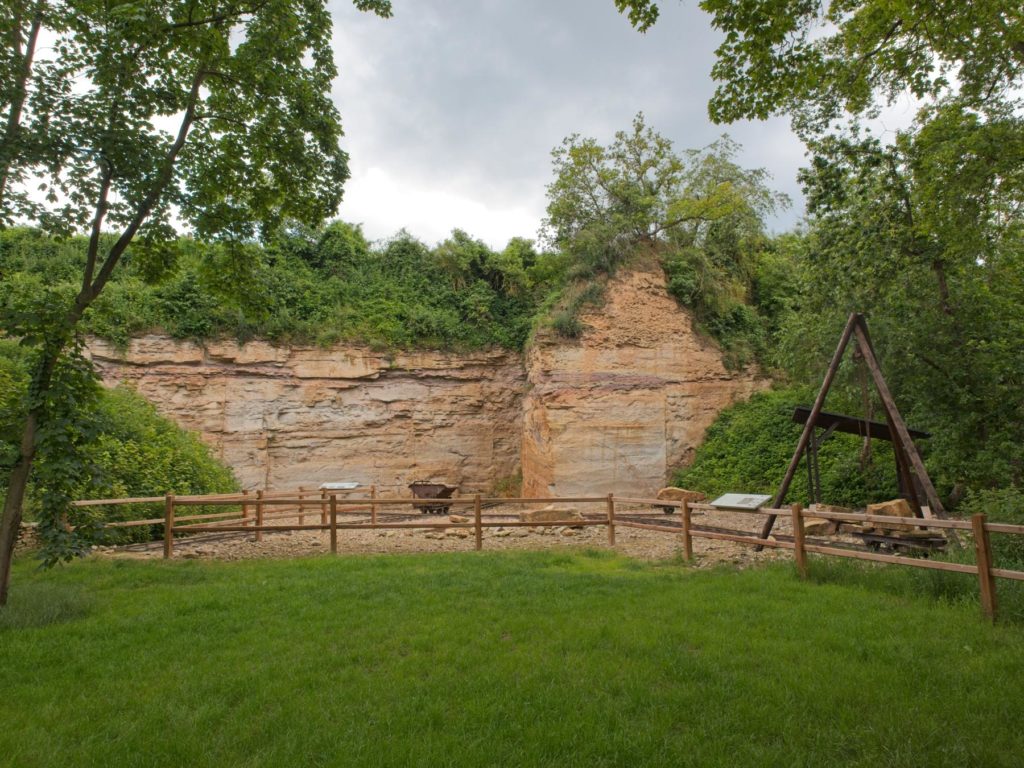
A quarry was already being operated in the Flonheim district in Roman times. In modern times, a lively business developed with Flonheim sandstone. The light-colored sandstone was not only quarried for large buildings in Flonheim or the Flonheim church, but also for buildings such as Mainz Central Station or Cologne Cathedral. There were 16 sandstone quarries in the area around Flonheim. Initially, the stone was transported via the old Roman road Worms-Alzey-Bingen. In the 19th century, the Wiesbach Valley Railway was built to transport the sandstone.
On a display board, Jürgen shows me a photo of a quarry from 1904, where the workers were lined up for the photo. It also shows a lorry like the one here in the show quarry. Although today's trolleys in the quarry are originals, they are not from this quarry.
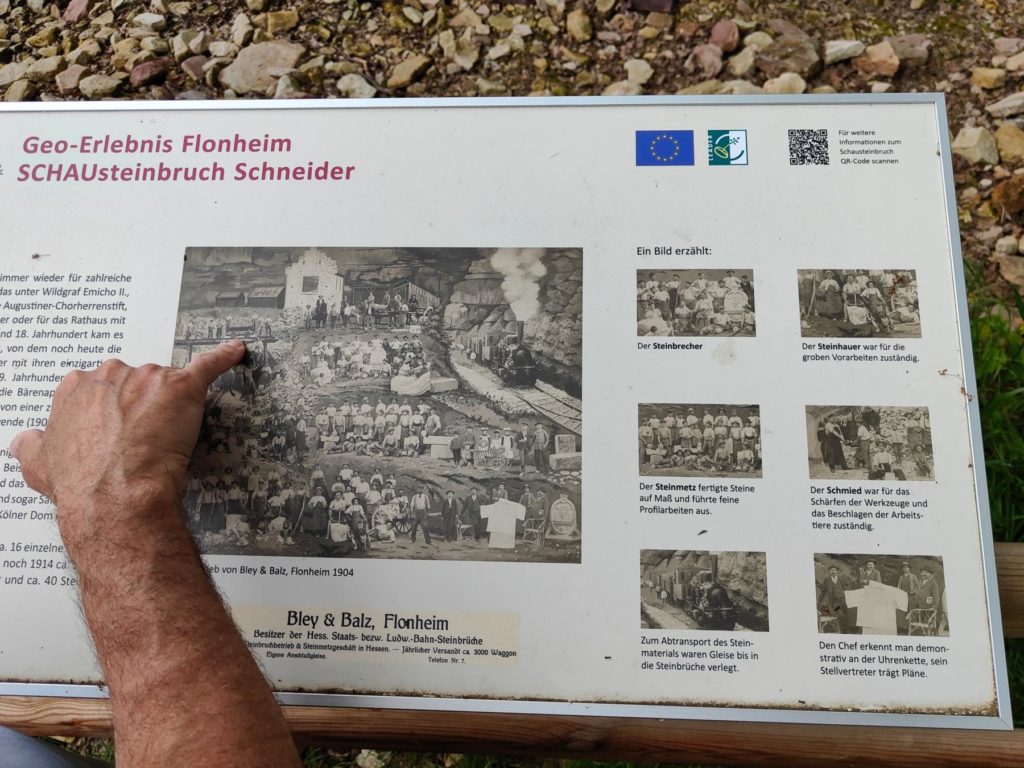
Erstaunt erfahre ich, dass die Landschaft von Namibia als Beispiel für die Entwicklung des Flonheimer Sandsteins vor ca. 290 Millionen Jahren dient. Ablagerungen eines verzweigten Flusssystems führten in mehreren Schichten zur Bildung des Sandsteins, der später so begehrt war.
While I wonder why it all took so long until the opening, Jürgen tells me that, for example, many cubic meters of earth had to be cleared away. A slope of earth covered the stone wall. The stone wall also had to be cleaned so that it would look so "clean" and "smooth" today. The fire department helped with a powerful sprayer.
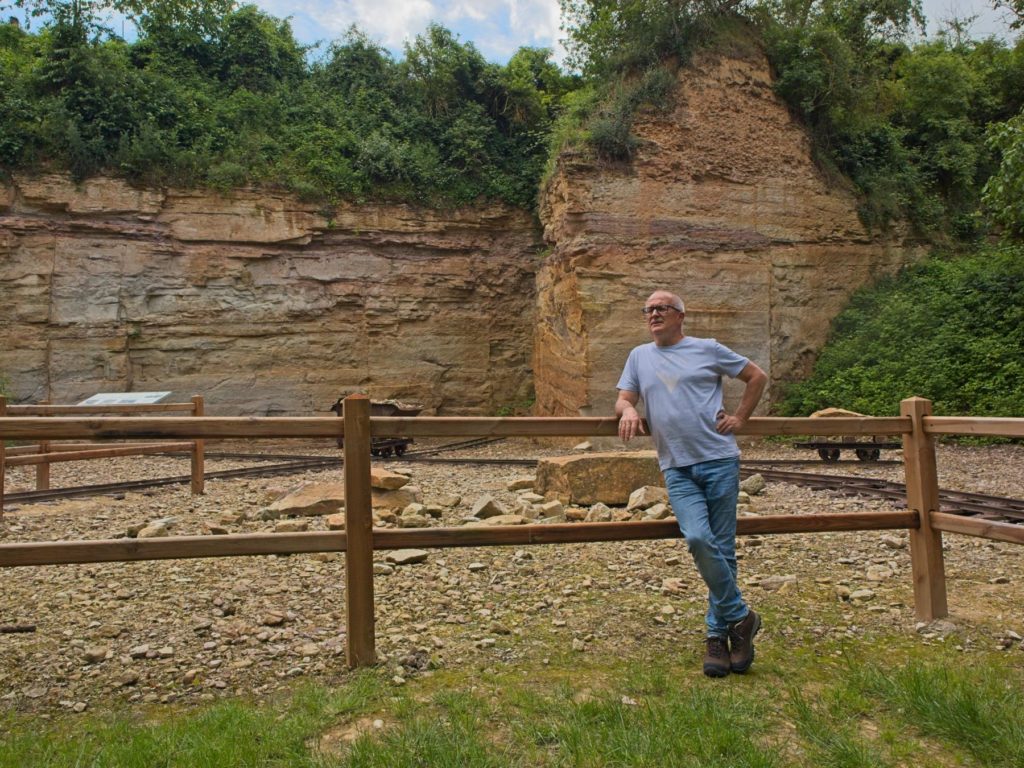
Traces of carving can still be seen on the stone wall. First, small fissures were laboriously chiseled into it, then a wedge was driven further and further into it until the stone broke apart. The large chunks were removed with carts and stones were worked in a shelter. Three-legged pulley blocks were used to lift the boulders. The block and tackle was attached to the top of three beams, with which the stone could be lifted from the wagon. Jürgen tells how they searched in vain for an original pulley block. Eventually they rebuilt the tripod and found an old pulley block on eBay.
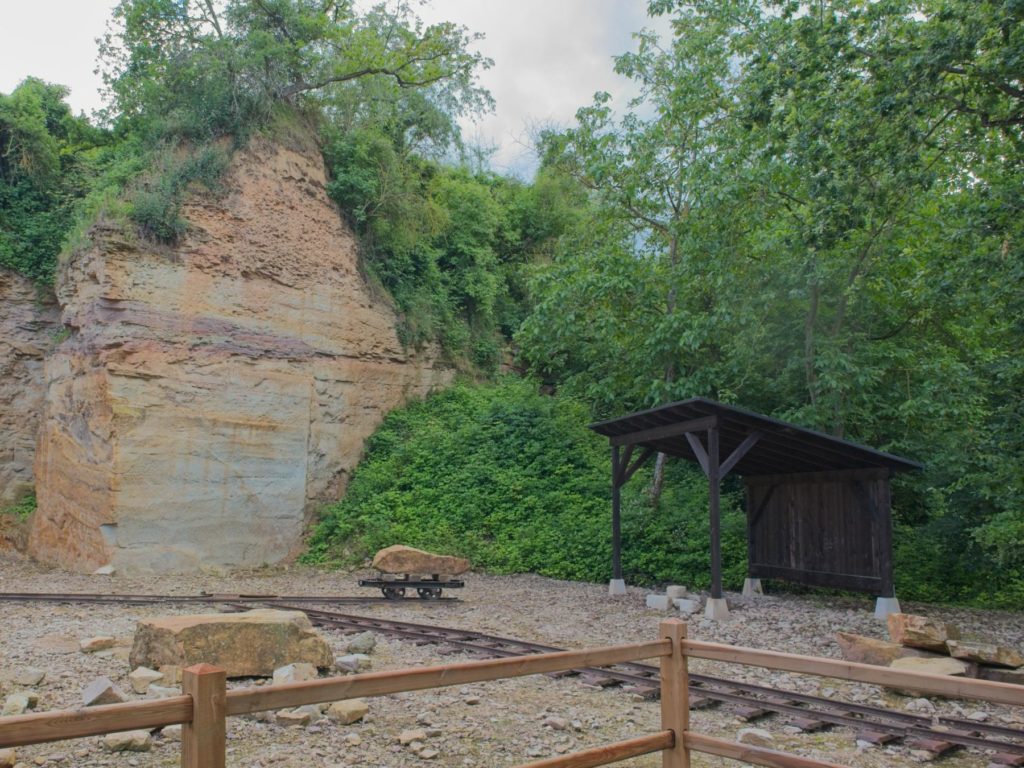
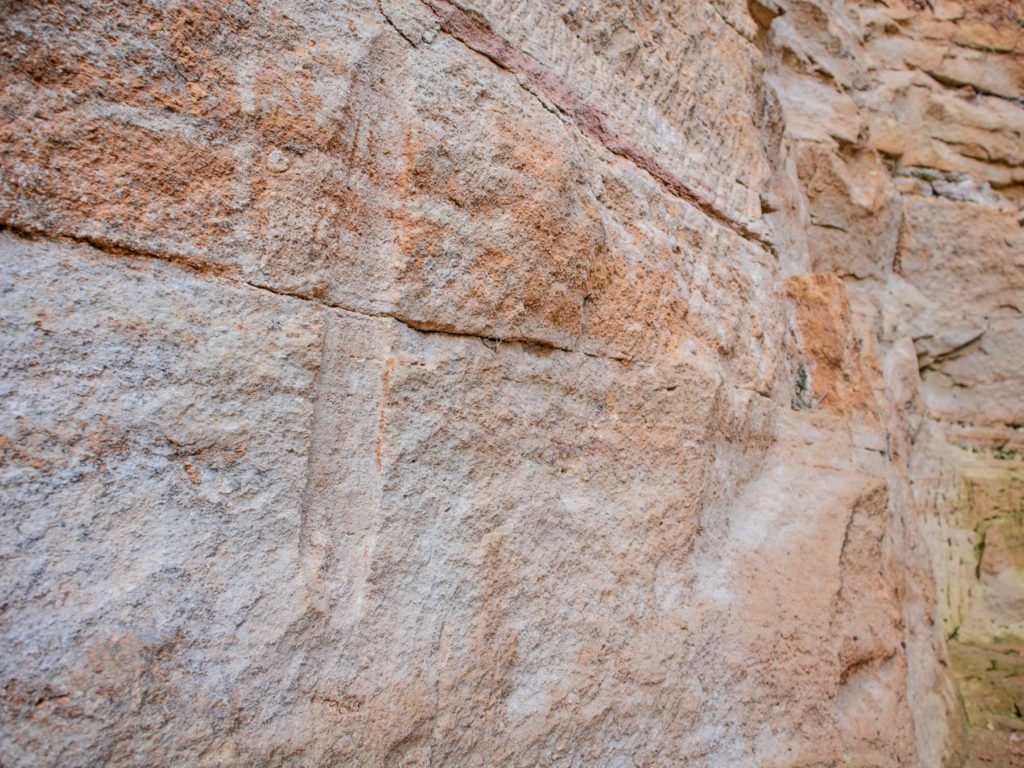
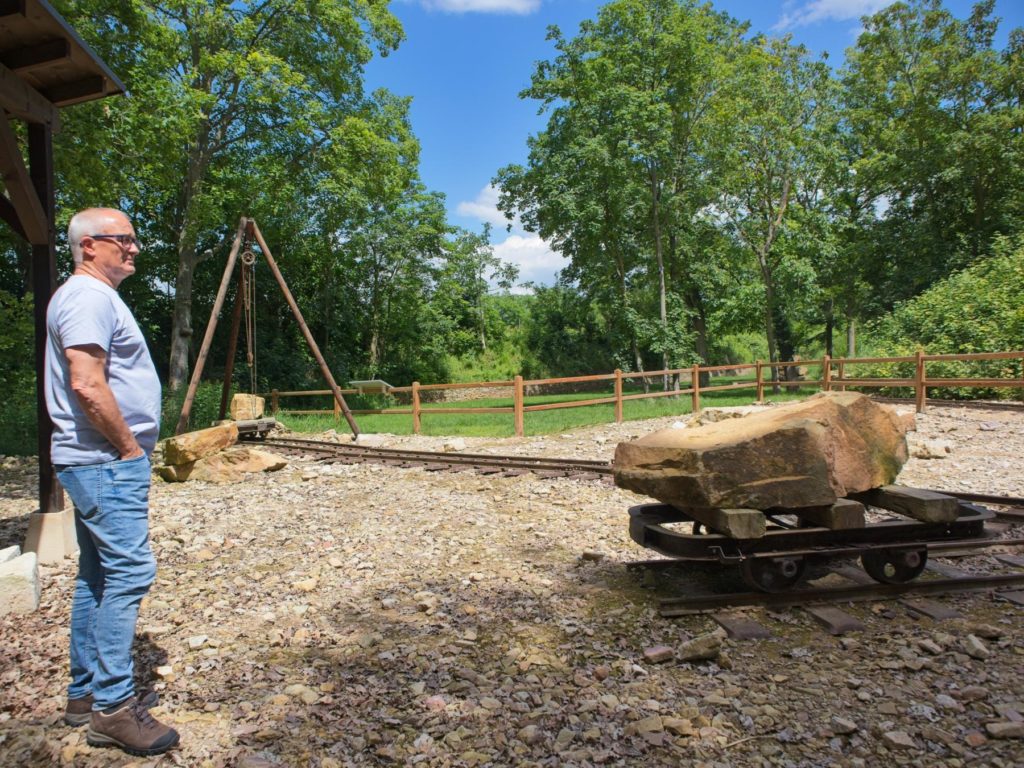
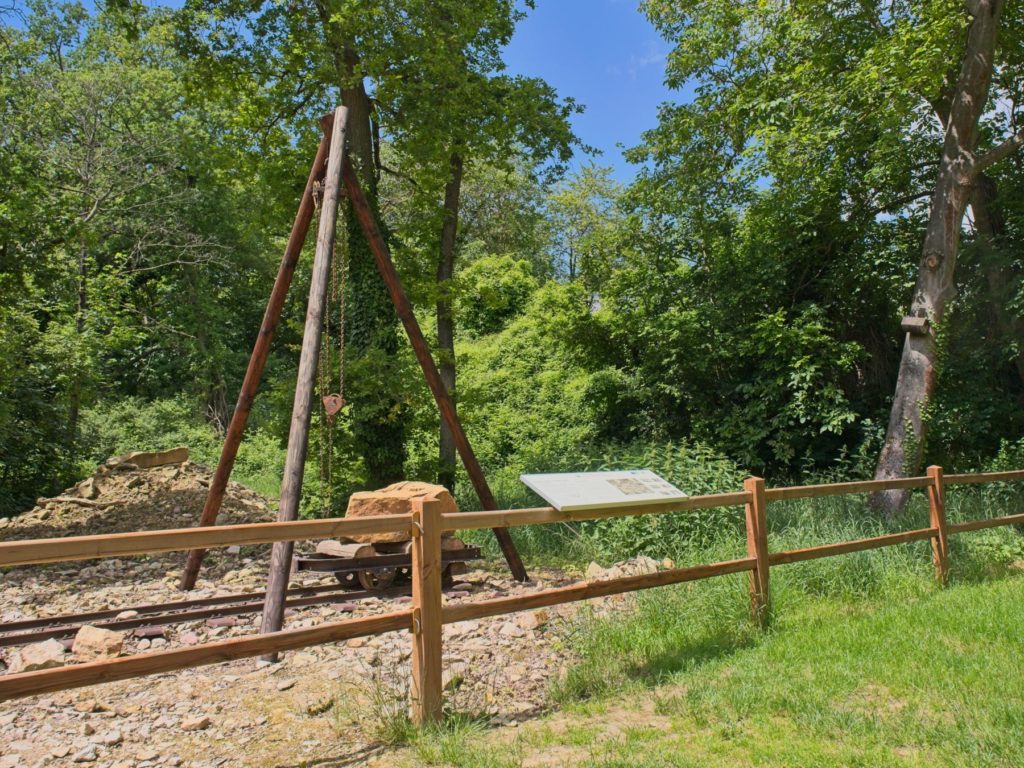
More pieces are to be added to the quarry gradually. There are plans to exhibit tools for cutting and working stone in the shelter. After a short walk back to the Naturfreundehaus, we say goodbye.
Infothek from Flonheim
The farewell doesn't last long. For the tour of the Infothek, Jürgen puts me in touch with Ulrich Höhn, a planner who specializes in museum and exhibition design. He planned the new Infothek, but was also involved in the "previous version" over 10 years ago. The week after my visit to the quarry, I meet with Ulrich Höhn in the Infothek on the historic market square. I am delighted that Jürgen Diehl will be there this time too.
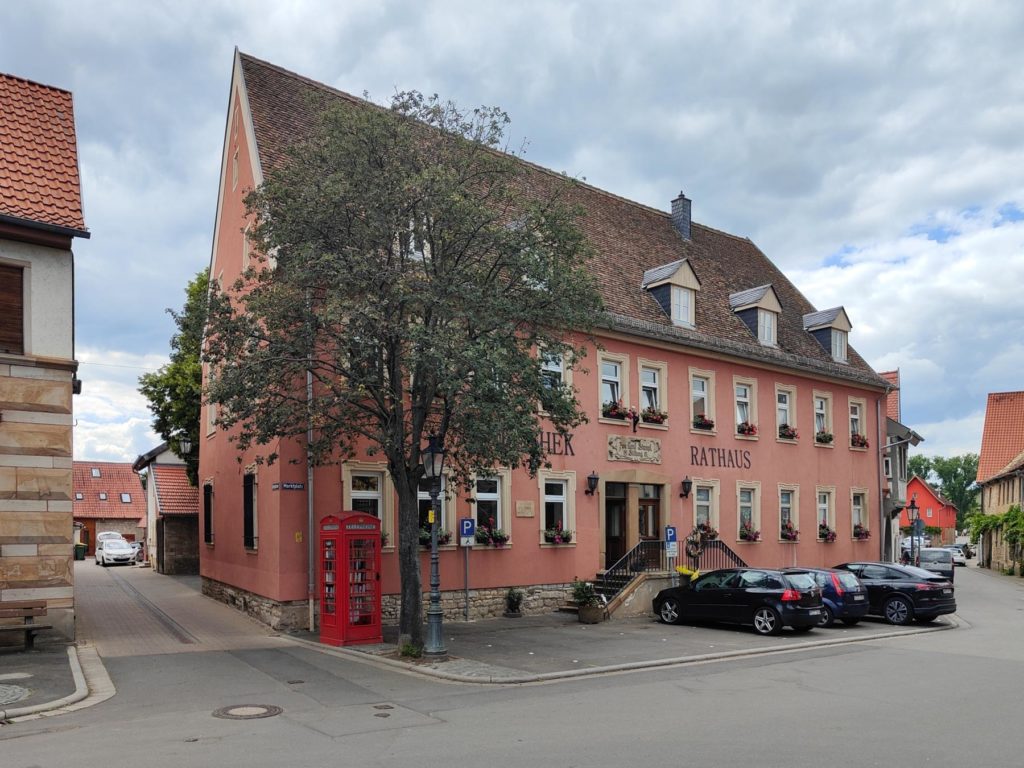
The Infothek is a combination of tourist information and local museum in the town hall building. Until the renovation, the Infothek was only housed on the top floor and there used to be a bank on the first floor. For the new main area of the Infothek on the first floor, walls had to be removed and a concept for the accessibility of the entire Infothek had to be determined. The barrier-free expansion of the Flonheim Infothek was supported by the European Union from the European Regional Development Fund as part of the response to the COVID-19 pandemic.
Even though the main entrance only appears to be accessible via a staircase, the information desk can be reached barrier-free via the open rear courtyard on the left-hand side of the property. Höhn explains the access concept to me. The foyer is also accessible outside of opening hours and contains information material as well as a terminal with information on accommodation and restaurants, cycling and hiking trails, culture and events. The foyer is visually dominated by an illuminated photo of the Flonheim Trullo. It owes its unusual appearance to the cantilever construction method, which dispenses with wood and forms the roof with stones placed on top of each other at an angle without mortar. It and other trulli (plural of trullo) from 1720 and 1760 look like the little houses in Apulia. One likely explanation is that Apulian migrant workers brought the architectural style to this region of Rheinhessen.
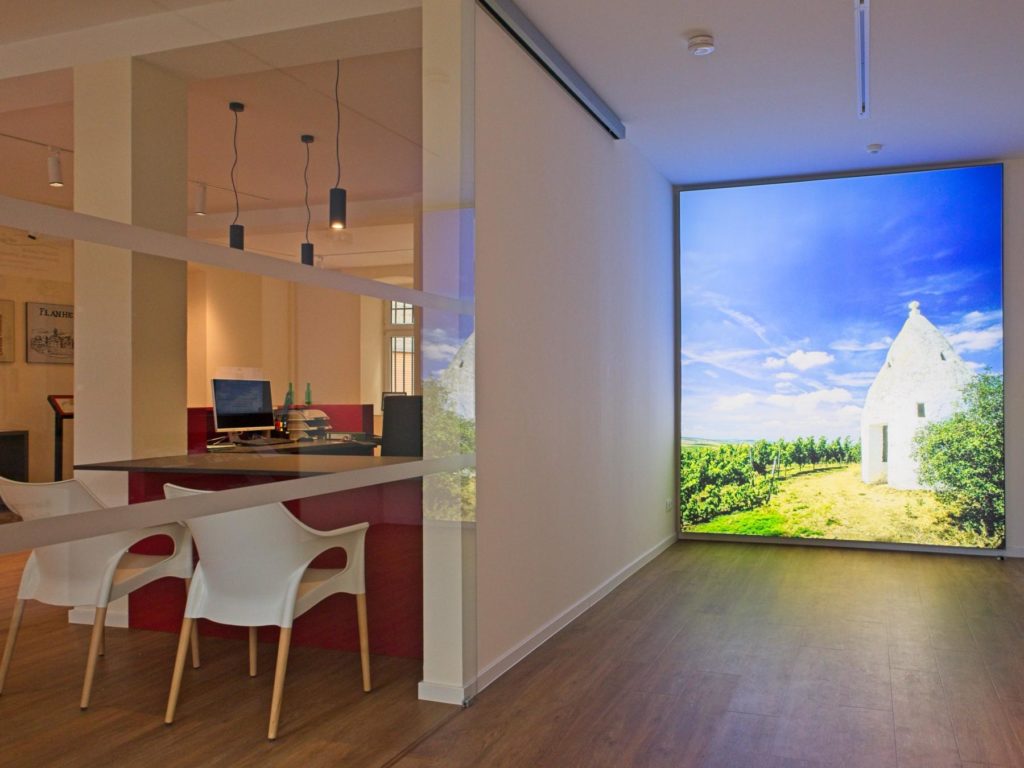
The exhibition area with the information desk is separated by a glass door, which is opened during opening hours. The open space introduces visitors to the themed worlds of sea, stone and wine in Flonheim. The open design was deliberately chosen so that events can be held here and the large display can be used as a presentation area, says Höhn. Visitors can experience the exhibition with the large touchscreen display and a controllable presentation.
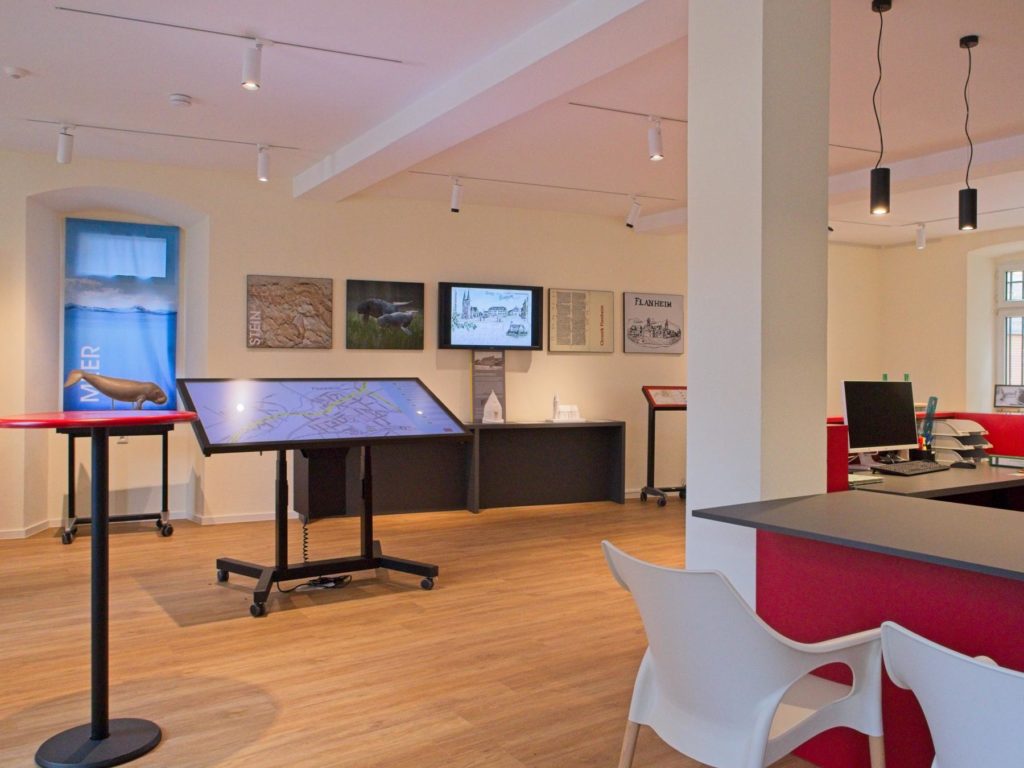
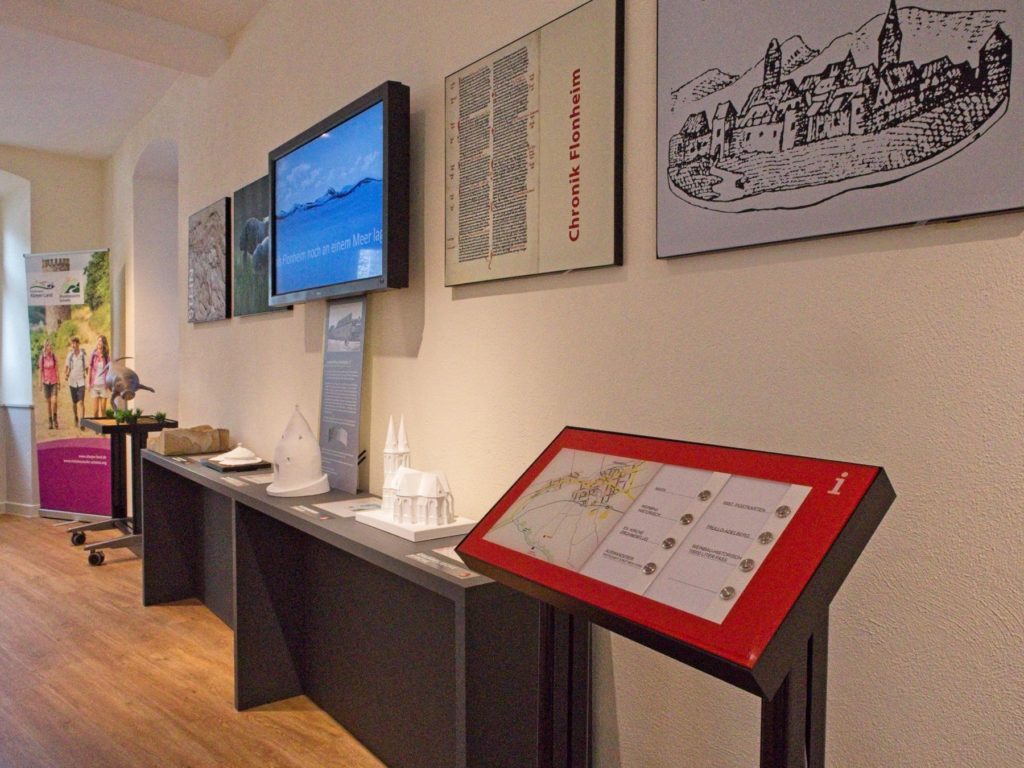
Long before stone was extracted from the quarries, the Rhine-Hessian hill country lay under seawater in the "Mainz Basin". The model of the manatee "Floni" bears witness to the subtropical past of around 30 million years ago. The original is a manatee skeleton that was found in Flonheim-Uffhofen. The original skeleton is on display at the Senckenberg Museum in Frankfurt am Main. As with the Flonheim trullo, photographs were also taken of the Flonheim church using an aerial drone, so that models can now be touched here. Other exhibits, such as "smell bottles", shed light on Flonheim's more recent past, for example as a wine village.
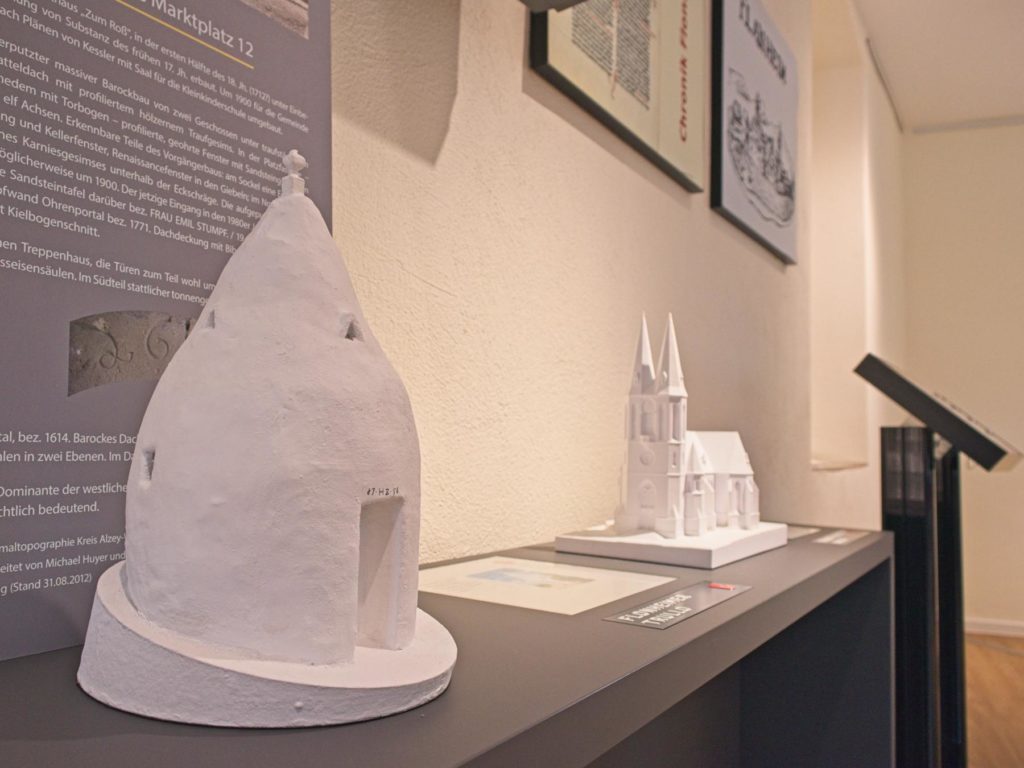
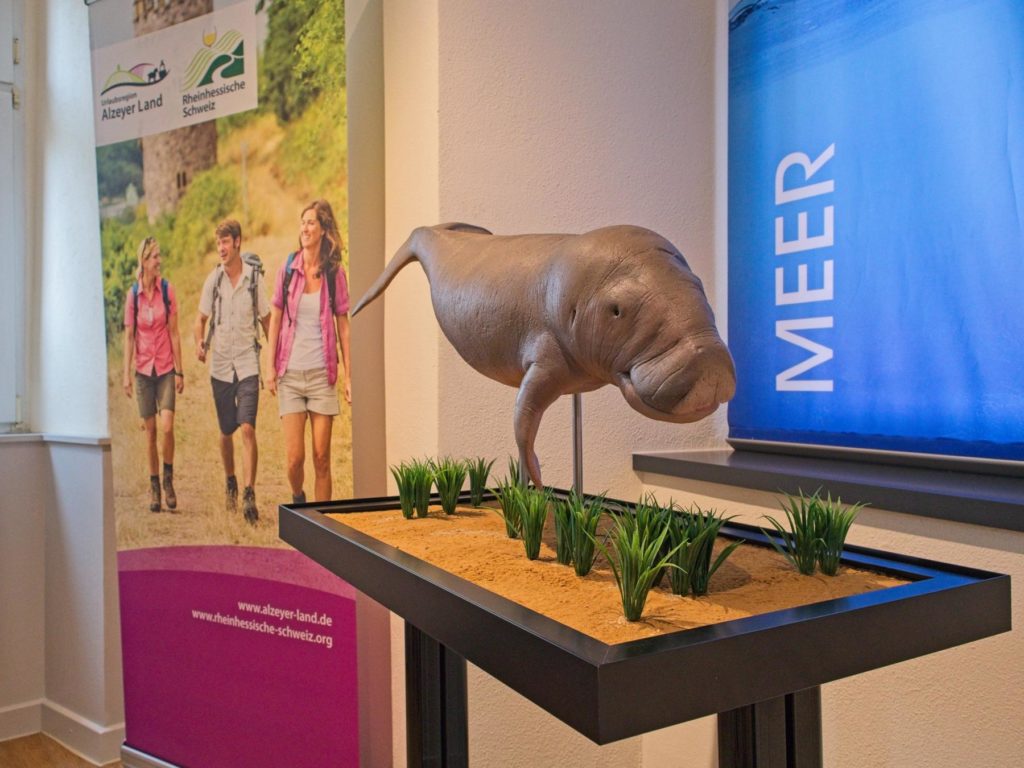
We leave the first floor through the foyer and then through the rear exit to the inner courtyard. An old stone hut in the courtyard has been restored for visitors and displays the Flonheim sandstone and its history. Here I come across the photo of the display board in the quarry again, as well as stone samples of various ages, tools and other photos. The last sandstone was quarried in Flonheim a few decades ago. However, a successor company in Hesse managed to "rescue" original Flonheim sandstone and use it for individual elements, for example.
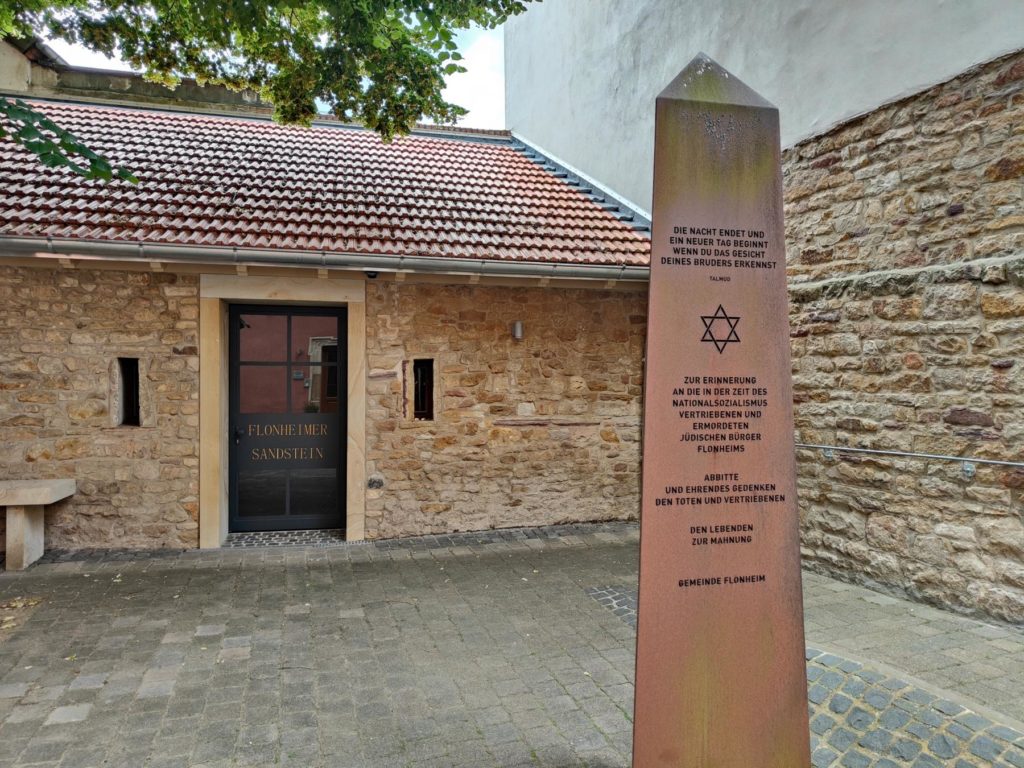
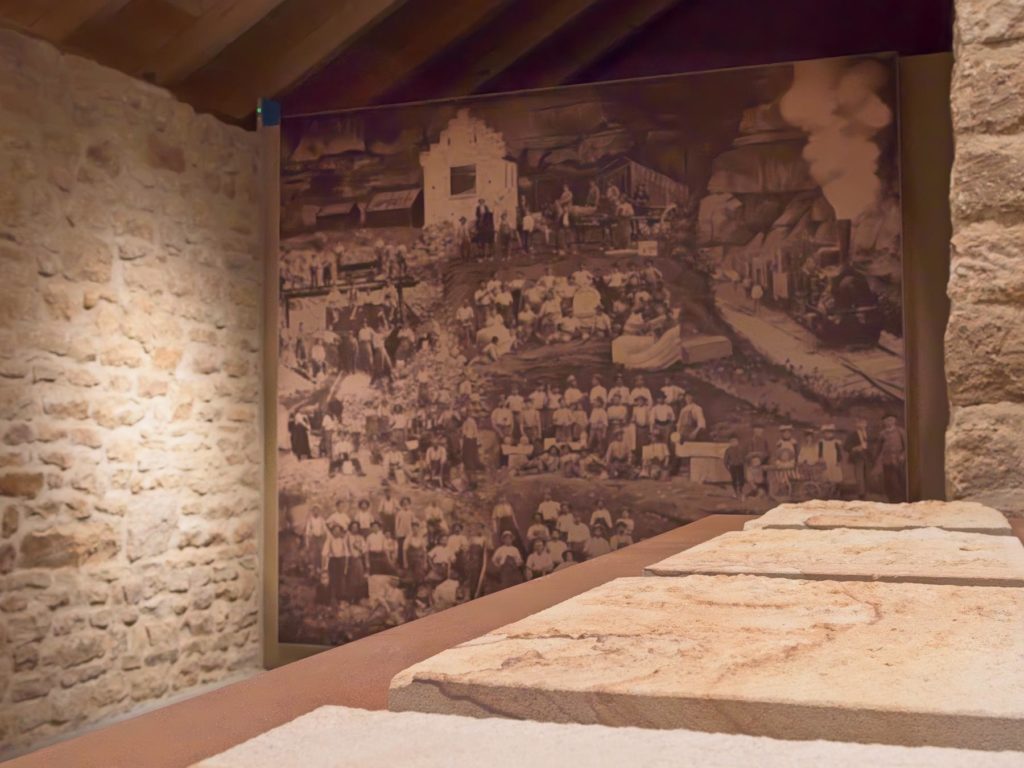
Finally, Höhn takes us in the elevator from the first floor to the top floor to the second part of the information desk. There, almost an entire wall appears to be made of sandstone. It was created as a cast of an original quarry wall. So you can experience a bit of the "sandstone wall" if you don't make the detour to the show quarry. Shells, corals, oysters and shark teeth impressively demonstrate the diversity of the sea at that time.
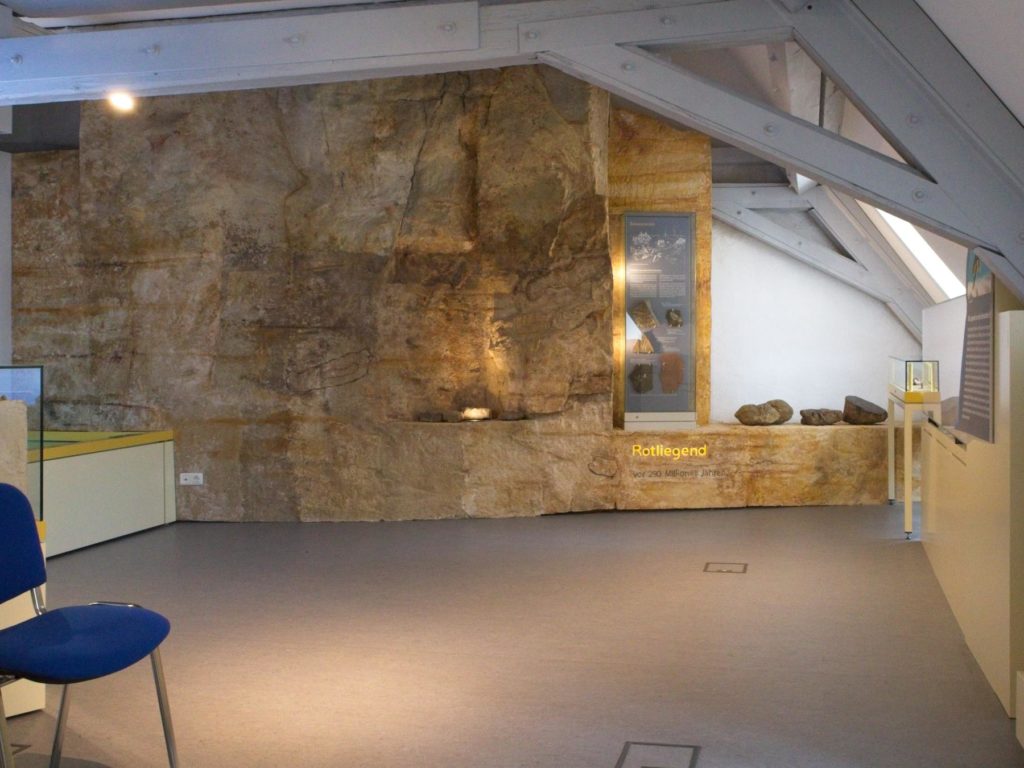
Fascinating exhibits take me back to a time before man, but also to more recent history in and around Flonheim. Finds from graves from the Frankish period, such as a 7th century princely grave with a set of weapons, prove that the town was also inhabited at this time. Copies of the grave goods can be seen in a floor display case. There are replicas of many of the fragile originals, including evidence of the subtropical period that was washed into the water.
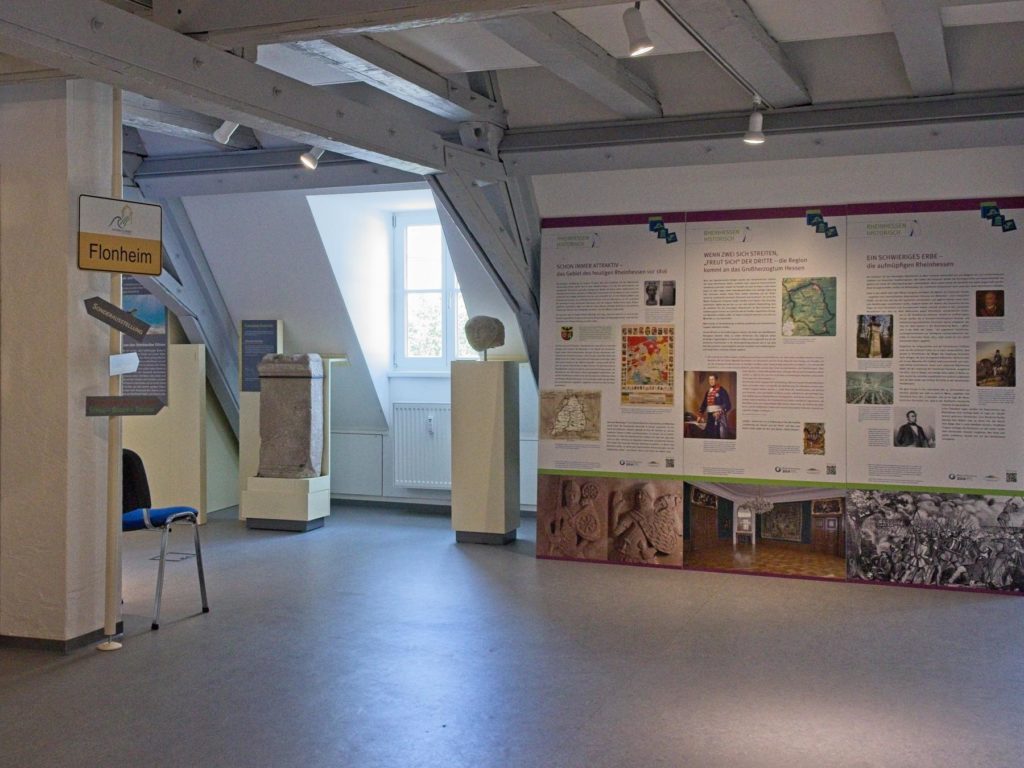
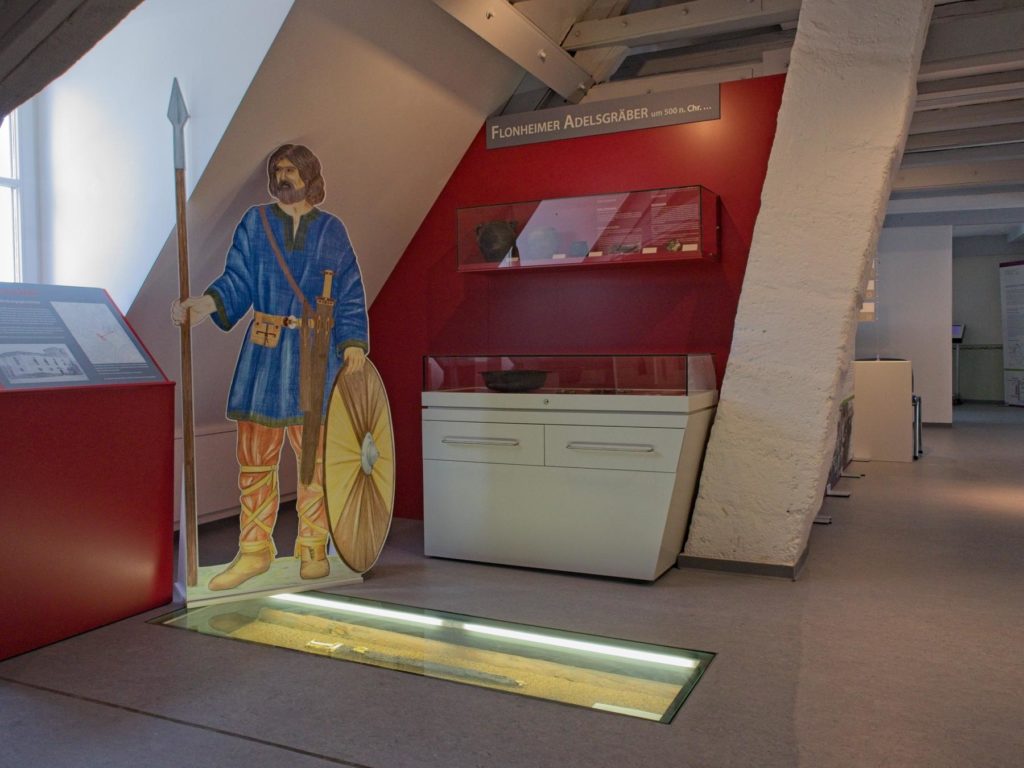
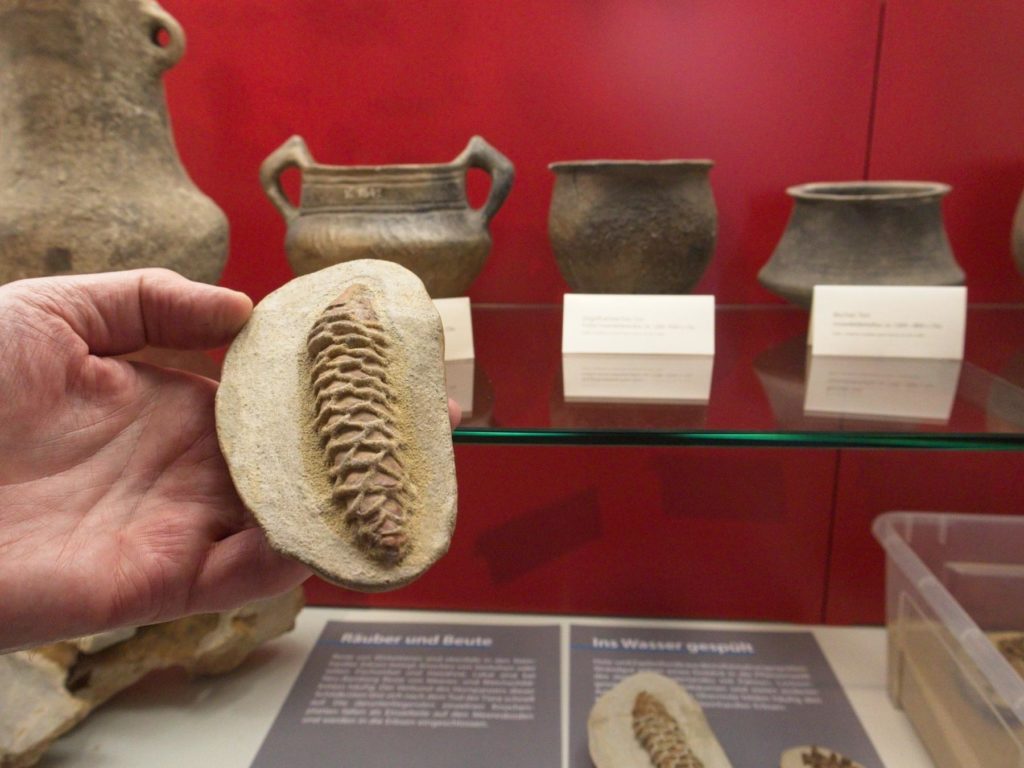
Back on the first floor, I take a photo of Ulrich Höhn and Jürgen Diehl in front of the Trullo before we say goodbye. Just as I have descended the stairs and am about to go to the car, I look back at the stairs and discover a stone plaque on the wall: "Ehem. Gasth. Zum Ross erb. 1712".
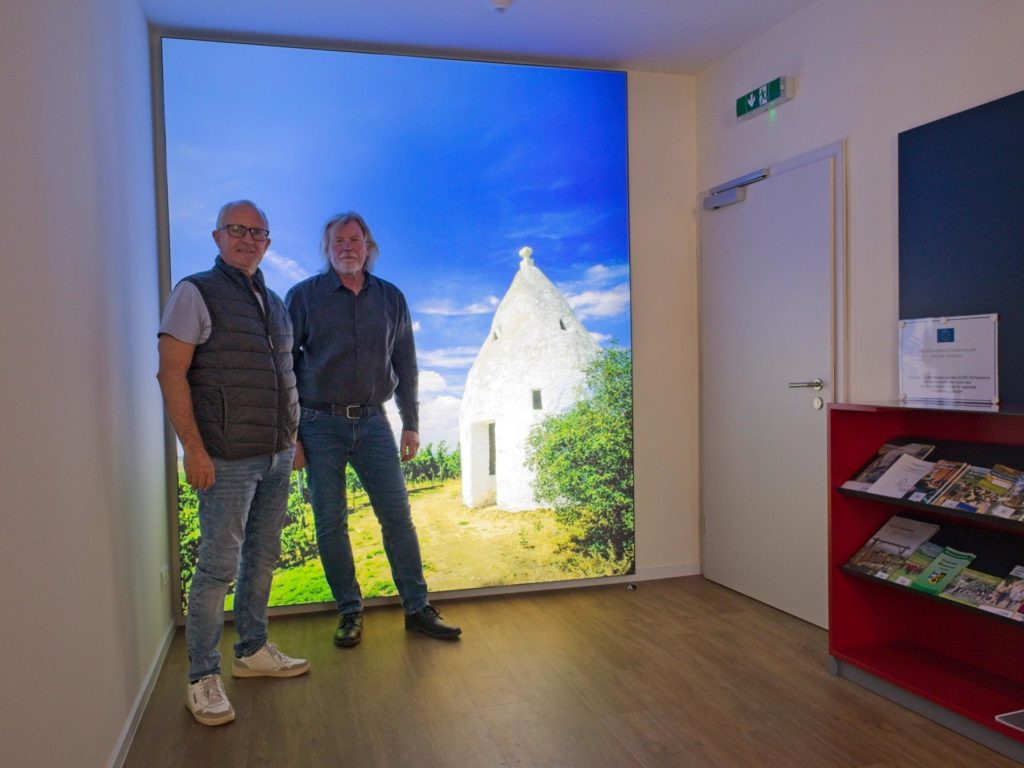
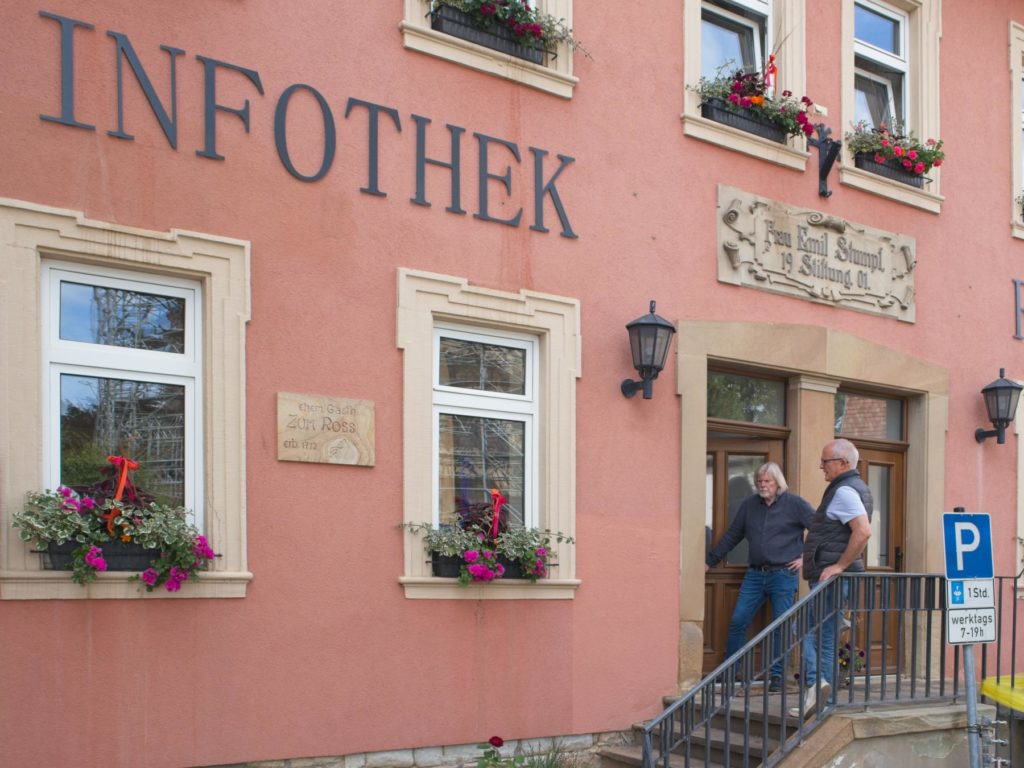
The building, built in 1712, once housed the Zum Ross inn, and I can't help thinking of a story about the rich Flonheim with its many quarries. There used to be over 30 inns in Flonheim to feed the many workers. Similar plaques still hang on some of the houses around the historic market square. I make a mental note to return to Flonheim for a tour of the town.
Opening hours of the information desk May to October:
- Fridays from 09.30 - 12.30 and 13.30 - 17.00
- Saturdays and Sundays from 09:30 - 17:00
Hiwweltour Aulheimer Valley
The Hiwweltour Aulheimer Tal is 13.3 kilometers long and leads through vineyards, meadows, the Wiesbach valley and the Aulheim valley, but also through sections of forest. It rewards hikers with the Flonheimer Trullo and numerous panoramic views. I report more about this in my blog post "A day of hiking in Flonheim and on the Hiwweltour Aulheimer Tal".
The route with further information can be found at Rheinhessen.de: Hiwweltour Aulheimer Valley.

